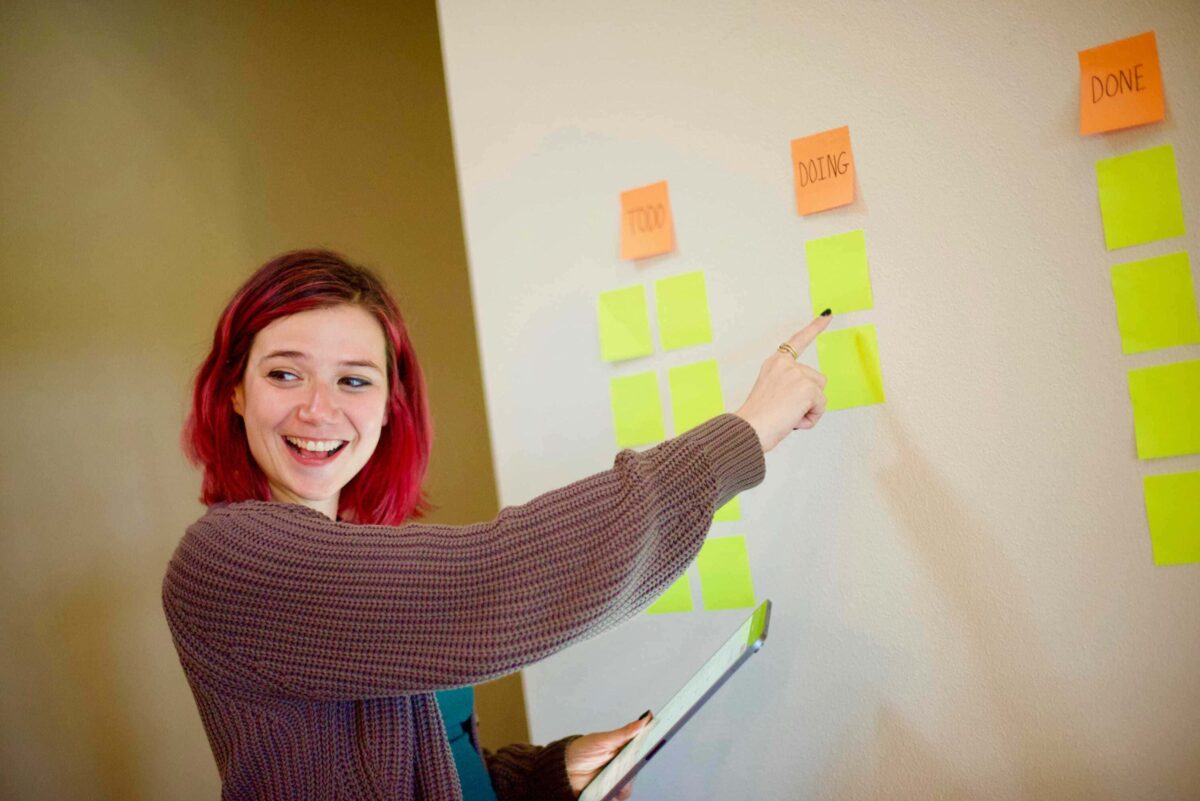Summary – In a Swiss context marked by accelerated digital transformation and organizational complexity, selecting the right profile – digital project manager or product owner – is critical to ensure governance, deadline adherence and business alignment. The digital project manager oversees planning, budgets and coordination while the product owner champions the product vision, prioritizes the backlog and measures value, their complementarity boosting transparency, agility and ROI. Clarify responsibilities, choose an internal, external or hybrid model based on your resources and context, then implement a structured recruitment process with a detailed job description, practical assessments and precise criteria to secure your digital initiatives.
The digital transformation demands rigorous coordination and a clear product vision to deliver high-performing digital solutions. Identifying the right profile – a digital/IT project manager or a product owner – is a strategic challenge in Switzerland, where the pace of innovation and organizational complexity continues to grow. Companies seek to combine governance, deadline control, and business alignment within technically skilled, agile teams. This guide details each role’s responsibilities, their complementarities, the benefits of hiring them, and best practices for an adapted selection process. It also addresses the dilemma between insourcing, outsourcing, or hybrid models to effectively steer digital projects.
Clarifying Responsibilities: Digital/IT Project Manager vs. Product Owner
The digital project manager coordinates all deployment activities and ensures deadlines and budgets are met. The product owner defines the product vision, prioritizes features, and acts as the interface between business stakeholders and the technical team.
Primary Responsibilities of the Digital/IT Project Manager
The digital or IT project manager is responsible for planning and delivering digital initiatives. They establish the schedule, monitor progress, and anticipate risks related to resources or technical dependencies. By defining key performance indicators, they ensure milestones are met and deliverables maintain high quality.
They orchestrate collaboration among internal teams, external vendors, and stakeholders. Leading steering committees and running progress reviews, they keep the project cohesive. Their cross-functional posture requires a deep understanding of business needs and technical constraints.
This role demands mastery of traditional methods (waterfall, formal communications) and agile approaches (Scrum, Kanban). The IT project manager must adapt their management style according to the organization’s maturity and the nature of deliverables.
Primary Responsibilities of the Product Owner
The product owner represents the business vision of the product throughout the development cycle. They manage the backlog by aligning each user story with strategic priorities and end-user expectations. Their mission begins with writing value-focused specifications and continues with daily trade-off decisions.
They serve as the business advocate to the technical team. By refining acceptance criteria and validating deliverables, they ensure the product’s functional coherence. Their involvement is continuous, from initial scoping to successive iterations.
The product owner drives the roadmap and tracks KPIs related to adoption and user satisfaction. Their expertise in design thinking and user-centricity helps create enhancements that truly meet internal and external customer needs.
Convergences and Complementarities
Both profiles share a common objective: the success of digital projects and stakeholder satisfaction. They collaborate closely to balance constraint compliance with continuous value creation. This complementarity streamlines processes and reduces project drift.
The digital project manager focuses on governance, budgets, and coordination, while the product owner hones the value proposition and functional content. Their collaboration allows simultaneous tracking of the “what” and the “how” of deliverables.
In some organizations, a single professional may combine both roles for medium-sized projects or during transition phases. This flexibility suits resource-constrained structures, provided the individual holds dual expertise.
Example: A Geneva-based business services firm entrusted a hybrid profile with managing a digital reporting platform and prioritizing new features, enabling them to meet a tight schedule while ensuring internal user satisfaction.
Why Invest in These Profiles?
Hiring a digital project manager or a product owner secures the stewardship of digital initiatives. These profiles bring methodology, strategic alignment, and agility to maximize project value.
Operational Efficiency Gains
A digital or IT project manager improves dependency management and ensures structured execution. By promptly identifying and addressing blockers, the project advances predictably. Regular status meetings and reports bolster transparency.
Conversely, the product owner minimizes wasted development by focusing efforts on high-value features. Each iteration is measured against business and user objectives. This approach reduces rework and optimizes ROI.
Their combination breaks down silos and enhances coordination between business and IT. Teams stay focused on clear objectives, which lowers tensions and delays caused by misunderstandings or shifting priorities.
Impact on Governance and Visibility
A digital or IT project manager structures decision-making bodies and defines a governance framework. Steering committees—facilitated with relevant indicators—give leaders real-time insight into project status. Risks are identified early and managed proactively.
The product owner contributes functional transparency by regularly publishing roadmaps and backlogs. Business stakeholders can follow progress, provide feedback, and adjust priorities without disrupting development flow.
This dual visibility—operational and functional—aids budget arbitration and strategic decision-making. It strengthens sponsor buy-in and builds confidence in digital investments.
Practical Case: A Swiss Watchmaker
An SME watchmaker in the canton of Vaud hired a product owner through an external provider to oversee the redesign of its online store. Simultaneously, a digital project manager handled integrations with ERP and CRM systems. Result: production launch met deadlines and conversion rate rose by 18% in the first quarter.
Edana: strategic digital partner in Switzerland
We support companies and organizations in their digital transformation
Insourcing vs. Outsourcing: How to Decide
Insourcing the role ensures deep contextual knowledge and strong organizational anchoring. Outsourcing provides rapid flexibility and access to specialized expertise without permanent commitments.
Advantages of Insourcing
By insourcing the digital project manager, IT project manager, or product owner, organizations gain swift ownership of business challenges. Familiarity with internal processes and key actors boosts responsiveness to change and clarity on priorities.
An internal employee stays for the long term and can drive the roadmap beyond a single project. They foster a continuous agile culture and share best practices across teams.
Finally, insourcing creates a stable point of contact for sponsors and end users, reducing risks related to knowledge loss during turnover.
Strengths of Outsourcing
Engaging a specialized provider for the digital project manager or product owner delivers immediate upskilling. External expertise—accustomed to diverse contexts—brings proven methods and industry benchmarks.
This model cuts integration time and financial commitment linked to long-term hiring. It allows resource scaling according to project load without complex HR processes.
Outsourcing often ensures neutrality in functional and operational decisions. The provider can recommend enhancements or correct course without internal political constraints.
Hybrid and Partial Outsourcing Models
Organizations can blend internal and external resources to balance contextual knowledge and sector expertise. For example, an internal product owner may steer strategic roadmap planning while an external digital/IT project manager handles technical coordination.
A hybrid model fosters internal skill development through knowledge transfer. Best practices introduced by the provider enrich the organization and remain accessible after the mission ends.
Example: A Romandy industrial group we supported chose to pair a permanent digital project manager with an outsourced product owner for its customer portal redesign—ensuring both business continuity and operational flexibility.
This choice between insourcing, outsourcing, and a hybrid approach should be made based on each company’s context. Our experts regularly advise clients on this decision.
Running the Recruitment Process: Practical Tips
Successful hiring relies on a clear job description, precise selection criteria, and rigorous soft-skill assessment. Implementing a structured process—combining practical exercises and targeted interviews—ensures candidate alignment with business objectives.
Crafting a Clear, Comprehensive Job Description
The job description should outline responsibilities, expected deliverables, and organizational context. It should list technical skills (project management, agile methods, tracking tools) and interpersonal qualities (leadership, communication, diplomacy).
Define performance indicators for the role: deadline adherence, deliverable quality, stakeholder satisfaction. This clarity aids interview discussions and candidate comparisons.
Finally, specify reporting structure and collaboration expectations with internal or external teams to avoid misunderstandings and clarify interactions from day one.
Sourcing and Pre-Selection Methods
Sourcing can leverage specialized professional networks, digital talent platforms, or recruitment firms. Seek referrals and tap into open-source communities or meetups to find engaged candidates.
During pre-selection, a quick initial contact validates motivation, relevant experience, and cultural fit. A structured questionnaire focused on past use cases sheds light on methodologies and environments encountered.
Short technical tests or case studies can complement early discussions to assess diagnostic skills and practical action planning.
Candidate Selection and Evaluation
Interviews should include at least one practical scenario where the candidate presents an approach to scoping a project or prioritizing a backlog. This simulation reveals rigor, synthesizing skills, and stakeholder-persuasion ability.
Soft-skill assessment should cover communication, conflict management, and collaboration mindset. Behavioral questions (“describe a stakeholder conflict and how you handled it”) gauge managerial posture.
Finally, a joint interview with future colleagues or sponsors ensures mutual understanding of expectations and builds trust before the final decision.
Optimize Your Digital Governance with the Right Profiles
Clearly defining the roles and missions of the digital/IT project manager and the product owner ensures coherent governance and efficient execution of digital projects. Their complementarity enhances agility, transparency, and alignment between business strategy and technical delivery. Choosing between insourcing, outsourcing, or a hybrid model depends on priorities of contextual knowledge, flexibility, and skills transfer.
A structured recruitment process, supported by precise criteria and relevant practical exercises, maximizes the chance of finding the right candidate to drive your digital transformation. At Edana, our experts are at your disposal to discuss your challenges and offer tailored support, whether integrating these profiles internally or leveraging partial or complete outsourcing.







 Views: 1245
Views: 1245